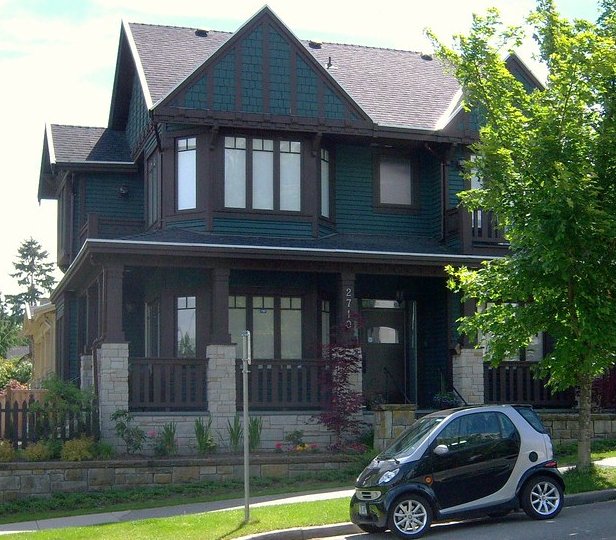average investment > Home Values Continue Upward Trajectory in Final Burst of the Spring Shopping Season (July 2023 Market Analysis)
Home Values Continue Upward Trajectory in Final Burst of the Spring Shopping Season (July 2023 Market Analysis)
Persistent homebuyer demand maintained its influence on elevating home prices throughout July, while initial indicators hint at the initiation of the customary seasonal cooldown as summer progresses.
The standard U.S. home value achieved a 0.9% rise from June to July, showcasing a noteworthy tempo for this period.
However, this marks a welcome transition to the seasonal moderation, following consecutive 1.4% month-over-month increments during the preceding two months.
Presently, the nation’s typical home value has reached an unprecedented pinnacle at $349,679, signifying a 1.4% boost from last July.
Following a 0.8% year-over-year expansion in June, this shift indicates the first acceleration in annual growth since April 2022, breaking a 16-month sequence of decelerating annual price hikes.
This measured upswing in annual growth underscores the housing market’s resilience, withstanding over a year of heightened interest rates without succumbing to a price slump, despite the subdued sales activity.
Buyers can anticipate an improved purchasing landscape through the remainder of 2023, as the market’s customary seasonal ebb and flow gradually transitions in their favor.
Emerging indicators of this transformation include an extended time on the market (expanding from a median of 11 days to pending in June to 12 days in July) and a growing proportion of listings reflecting price adjustments (rising from 21% in June to 22% in July).
Nearly all major U.S. markets witnessed an augmentation in home values from June to July, with almost half still registering a downturn from levels recorded a year ago.
Metropolitan areas in the Midwest and Northeast spearheaded the monthly gains in July. Noteworthy contributors to this trend include Hartford (2.1% surge from June), Pittsburgh (1.5%), Chicago (1.4%), New York (1.4%), and Boston (1.3%).
Month-to-month, home values ascended across all but one of the 50 largest metropolitan regions.
Austin observed a minor dip of -0.5% in typical home values during July, with the slowest monthly advancement documented in San Antonio (0.2%), Denver (0.2%), Birmingham (0.3%), and Memphis (0.3%).
Around half (23 out of 50) of the largest metro areas reported a dip in home values from the previous year.
Notable declines were noted in Austin (-10.4%), Phoenix (-6.1%), Las Vegas (-6.0%), San Francisco (-5.0%), and Sacramento (-3.9%). Annual price growth demonstrated its most robust manifestation in Hartford (5.7%), Richmond (5.4%), Philadelphia (5.3%), Miami (5.3%), and Milwaukee (5.2%).
Continuing Challenge of Limited Listings
The ongoing trend of scarce new listings reached a new nadir in July, with slightly under 336,000 properties entering the market. This figure denotes a 26% contraction from the previous July, a phase when the flow of new listings had already begun to wane due to escalating interest rates.
Although the year-over-year decrease in July was relatively smaller than June’s substantial 28% plunge, this divergence does not inherently signify an enhancement in new listings; rather, it signifies the establishment of a lower baseline for comparative purposes.
The cumulative total of new listings for July, just below 336,000, would typically correlate more with January figures.
For a midsummer benchmark, data from 2018 and 2019 serve as more relevant points of reference, with an average of just over 473,000 new listings joining the market in July. This presents a noteworthy 41% increase when compared to the listings logged this July.
The scarcity of new listings, prevailing for a full year, can largely be attributed to the elevated interest rates on mortgages (currently at 6.9%).
Findings from a recent survey conducted by an alternate source imply that the gap between homeowners’ existing mortgage rates and prevailing rates contributes to homeowners’ hesitance to sell.
Homeowners with rates of 5% or higher showed nearly double the inclination to consider selling within the next three years in comparison to those with rates below 5%.
While this doesn’t necessitate a regression to 5% rates, it does indicate that lower rates may enhance homeowners’ receptiveness to the notion of selling.
However, even with heightened willingness among homeowners to sell, the resultant turnover of housing stock may not substantially bolster net new supply in the market.
Net new housing predominantly stems from newly constructed homes.
Builders are addressing the unfulfilled demand arising from inadequate listings of existing homes by revitalizing new home sales.
In response to affordability concerns, builders are diversifying their offerings, focusing on smaller residences, townhouses, and interest-rate incentives to cater to their clientele.
Persisting Inventory Constraints
Overall active inventory during July experienced a 15% year-over-year downturn, plunging an impressive 44% below levels registered in July 2019.
This tally encompasses all homes actively listed on the market by the end of July, as well as unique listings that held active status at any point within the month.
These figures remained nearly unaltered from June, showcasing a minor month-over-month growth of 0.1%.
This pace is significantly more restrained than the seasonal buildup witnessed in the past two years during the same period, when active listings demonstrated a 5% to 6% month-over-month surge.
It is reasonable to assume that July will represent the zenith for inventory in 2023, aligning with the seasonal patterns documented in 2018 and 2019.
At best, there might be a marginal uptick in August, echoing the trends seen in 2021 and 2022. Nonetheless, buyers should not anticipate a substantial expansion in available homes for sale on the platform throughout the rest of the year.
Zillow’s weekly tally of active listings began to decrease during the last full week of July, signaling the initiation of a gradual inventory decline until a seasonal nadir in early 2024.
Steadfast Buyer Engagement Persists
Newly pending listings, a real-time gauge of purchase activity, recorded a modest 14.5% downturn from year-ago levels.
This marks the smallest year-on-year contraction since May 2022, although it still signifies a noteworthy deceleration in activity compared to the robust sales volumes seen in 2021 and 2020.
Furthermore, as seen in the case of new listings, the yearly fluctuation in newly pending listings is now measured against a lower baseline. By July of the preceding year, pending sales volume had already begun to plummet steeply.
On a monthly basis, newly pending sales observed a decline of 6.5% from June to July, remaining consistent with the seasonal patterns recognized in 2018, 2019, and 2022.
During these years, pending sales activity reached its pinnacle in May, with the third quarter emerging as the second busiest due to the gradual ebb in buyer activity during the summer months.
Another indication of marginally reduced buyer activity is evident in the median pending sale duration, which stood at 12 days in July, two days longer than the seasonal nadir of 10 days noted in April and May.
The gradual moderation in sales volume and pace indicates a shift in negotiating leverage toward buyers.
Those navigating the market can expect this shift to further sway in their favor as summer unfolds. This observed seasonal pattern, identified in the June market report, has unfolded as predicted this summer.




